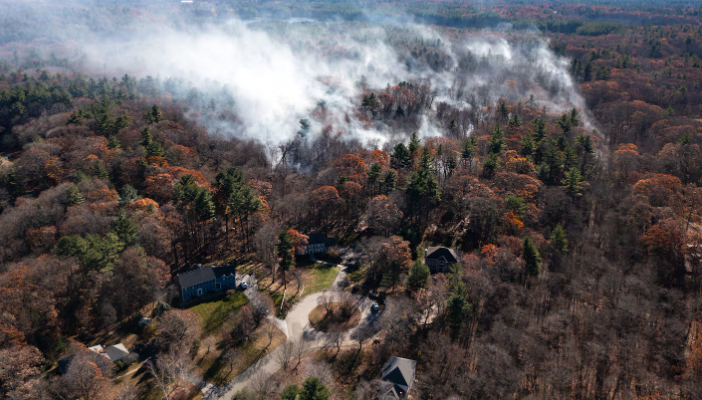With Southern New England facing yet another red flag warning today, fire officials are urging residents to be extra vigilant and not to have open flames of any size outdoors on their property or elsewhere amid these historically dry conditions.
This unrelenting drought has left much of the region “bone dry,” making it easy tinder for any fires to spread quickly and compound the number of rampant wildfires that have sprung up across Massachusetts this fall.
“Under the current weather conditions, the truth is that any outdoor fire right now is going to spread quickly and become difficult to extinguish,” said Jake Wark, spokesperson with the Mass. Department of Fire Services. “The warm, dry, bright, and breezy weather we’ve had for the past month or so has been great for outdoor activity, but it really elevates the fire risk.”

About 210 wildfires have overtaken 532 acres in the past week, with most of the fires concentrated in the eastern side of the state, according to Wark. The growing number of wildfires includes 50 blazes that erupted in just 24 hours.
“That’s more than twice as many fires in one day as we usually see during the entire month of November,” he said. Last month also saw an unprecedented number of wildfires, at 208.
“And as we’ve seen repeatedly, wildfires are not limited to rural areas,” Wark said, noting that around 45 percent of Massachusetts homes are in or near areas at risk for a wildfire, “meaning that just about any significant fire is going to put people and property in danger.”
That’s why, fire officials said, residents need to be on alert and take precautions outdoors, especially as wind gusts are expected to whip up to over 30 miles per hour in some spots Tuesday.
“The surface and ground fuels out there, those falling leaves, dry grass, dead trees, root systems, and other combustibles, are all bone dry,” Wark said. “This makes them very receptive to ignition – in other words, they’ll burn very quickly and easily. Get a little wind behind it, like we’ve had regularly the past several weeks, and that fire will take off.”



